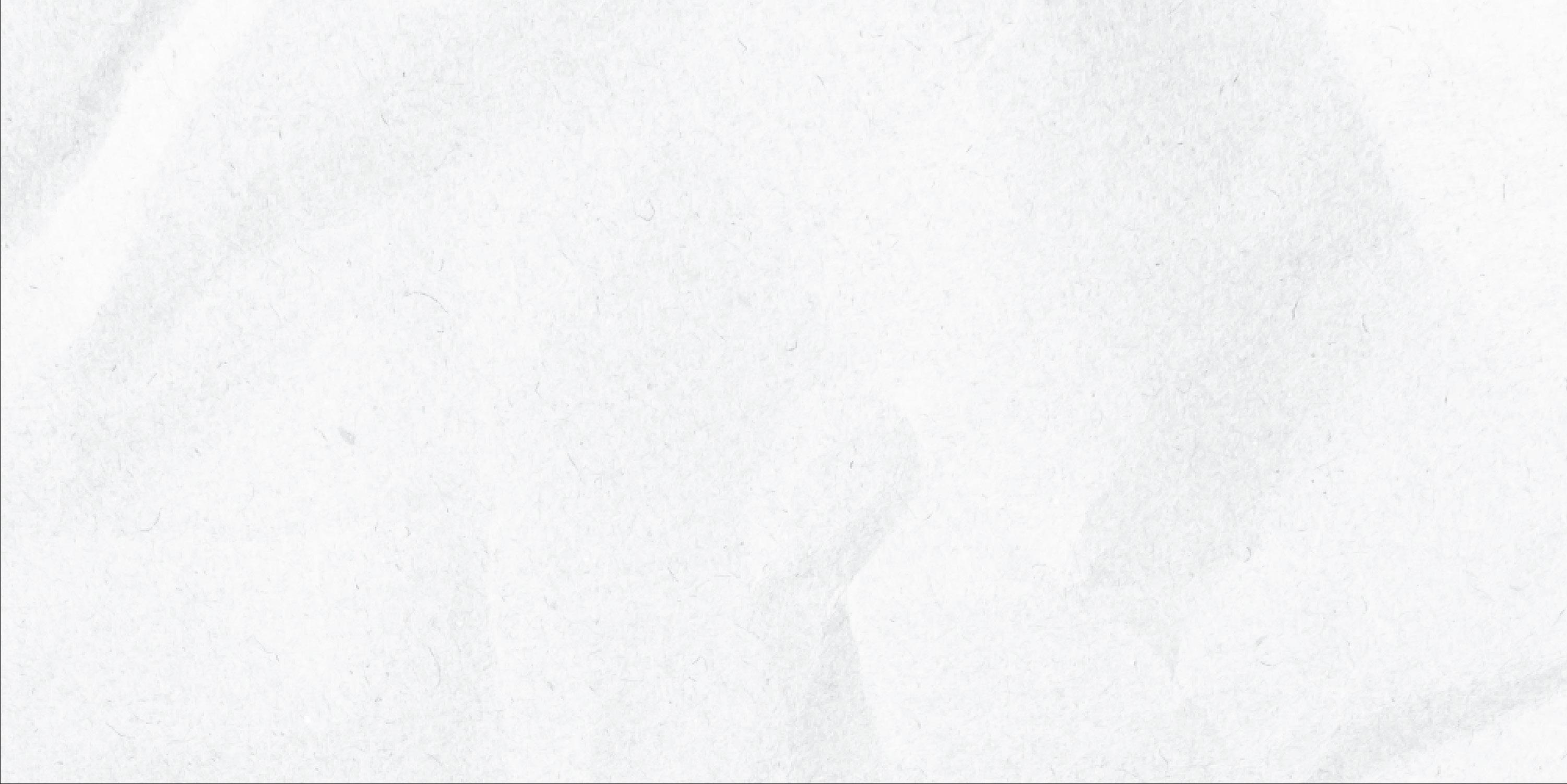




By Jayke Martin STATESMAN REPORTER
On the first morning of Fall Break, while many students are packing cars for a trip home or sleeping in, a group of Utah State University students will be loading into vans with work gloves and water bottles.
They’re not heading home or to a vacation spot — instead, they’re going to communities in need. These students have found an Alternative Fall Break is how they want to spend their time off.
Since 1996, the Utah State University Christensen Office of Service & Sustainability has offered Alternative Breaks as a way for students to spend their time serving in communities. These trips encourage students to engage in social issues, learn about impactful organizations and participate in hands-on activities.
From Oct. 10-12, students will head to Moab to volunteer with Community Rebuilds and the Youth Garden Project, two programs whose goals are to build healthy, connected communities.
on experience with social issues while working alongside local organizations.
“Think less lounging, more learning. It’s a meaningful alternative to a traditional break — no partying, no distractions. Just a group of passionate students diving into real community challenges in a fully immersive, drug and alcohol-free environment,” Bandley said.
This year, COSAS will be hosting several Alternative Breaks throughout the academic year, including Fall Break, Presidents Day weekend and Spring Break.
“From what I understand, COSAS is all about helping and giving back to the community, which I love. So, I’m looking forward to the experience,” said James Greenwall, a USU student attending the Fall Break trip.
Each trip focuses on a specific theme such as sustainability, community responses to homelessness, animal welfare or food security and waste. Partner organizations are chosen based on how closely their work aligns with those issues.

“It’s about turning passion into purpose. These trips combine education, service and reflection to help students become informed, active citizens. Students often return with a deeper understanding of the issues, new friendships and even a renewed sense of direction,” said Giselle Bandley, USU Center for Community Engagement student leadership & development coordinator.
The programs are designed to give students hands-
“We’re always looking to grow, whether that’s by expanding trip locations, exploring new social issues or making the experience more affordable for students,” Bandley said. “Lodging is one of the biggest expenses, so we’re also working on building stronger partnerships to help reduce costs.”
Trips are currently funded through a small portion of COSAS’ budget and students’ registration fees.
Bandley explained keeping these experiences afford-
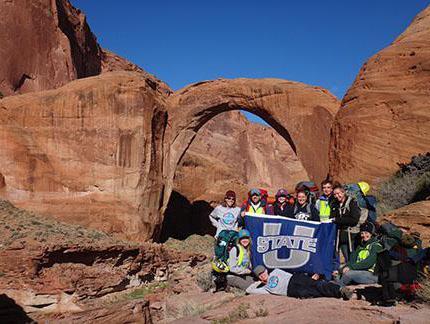
able for students is a top priority, especially as organizers look for ways to expand.
As for who participates, Bandley said the trips attract a variety of students.
“Some are seasoned volunteers, returning participants, and others are just curious or want to do something meaningful over break,” Bandley said. “Many are passionate about civic engagement, some need service hours and a few just want to try something new.”
While students’ reasons for joining vary, the trips are structured to give participants a deeper understanding of community needs while also offering an alternative to a traditional student break.
“Through direct service, reflection and education, students start to see how their own values, choices and voices can shape the world around them,” Bandley said.

Jayke Martin is a junior studying journalism with a minor in theater. She loves reading and meeting new people.
jayke.martin@usu.edu
By Malory Rau STATESMAN EDITOR
Thousands gathered in the Utah State University Dee Glen Smith Spectrum on Sept. 30 for what is now titled the “This is the Turning Point Tour,” formerly known as the “American Comeback Tour,” since the death of Charlie Kirk at Utah Valley University on Sept. 10.
Attendees of the event were adorned in red and white. Many wore “Make America Great Again” hats or white hats with a gold 47 Charlie Kirk was known for wearing. They also brought flags and signs, and for those who were empty-handed, Turning Point USA provided posters of Charlie Kirk on each of the chairs for attendants to hold up.
Prior to the speakers, there was a highlight reel of Kirk’s message, as well as the USU Turning Point USA President Kaitlin Griffiths, who spoke on the safety of the event and getting involved with TPUSA.
“Our chapter has just been absolutely blown away by the response from the community for this event,” Griffiths said.


don’t do, what we refuse to do, is bow to despair,” Clark said.
Clark brought up to the stage Caleb Chilcutt, UVU TPUSA president, to honor him and those present at the UVU event on the day of Kirk’s death.
After Clark, a pre-recorded video of Lee, who was unable to attend in person, was played.
“It really is an honor and a pleasure to be asked to pay tribute to my friend Charlie Kirk,” Lee said. “I still can’t believe he’s gone.”
Following Lee, a panel including former Utah Rep. Jason Chaffetz, Arizona Rep. Andy Biggs and Cox spoke as well as answered questions from students and other attendees.
Cox shared his experience on the day of Kirk’s death. He spoke about being on the phone with President Donald Trump as well as his initial reactions when he first heard of the shooting.
“I wish I hadn’t seen that video. I can’t unsee it,” Cox said about being shown a video of Kirk right after he had been shot.
After which, the event held notable speakers, including podcast host of “Culture Apothecary” and media personality Alex Clark, a virtual visit from Sen. Mike Lee, a panel of Republican politicians affiliated with the Church of Jesus Christ of Latter-day Saints and Gov. Spencer Cox, who received a bout of boos upon entry.
Clark noted this event was the largest turnout of a TPUSA event ever, claiming there were over 6,500 people in attendance.
“I’m not here to eulogize Charlie Kirk. I am here to pass the torch on to every single one of you tonight. Each of us certainly feels the weight of this loss. But what we
The panel also discussed topics including the recent shooting of a Church of Jesus Christ of Latter-day Saints church building in Michigan, freedom of speech and nihilism. The panel was live-streamed and is available on YouTube through several media outlets.
The tour’s next stop is Montana State University. It is listed as an evening event. More information on the tour can be found on its website theturningpointtour.com.

Malory Rau is a senior from Denver, studying journalism with a minor in marketing.
— m.rau@usu.edu
Sept. 29, 2025: Braylen Carlson was misgendered in the article “Club golf team coming to Utah State.” The correction has been made online at usustatesman.com.

By Avery Truman STATESMAN EDITOR
In a hidden cell tucked between the Utah State University Metal Factory and aviation labs, a faint rumbling can sometimes be heard through the vine-covered walls. Some might mistake this sound for an air conditioning system, but the reality is a bit more out-ofthis-world. USU students are working with partners, like NASA, to test rockets.
When humans return to the moon for the first time since 1972 as part of NASA’s Artemis program, astronauts will land on lunar regolith: a sharp, sticky, electrically-charged dust unlike most substances that exist on Earth. The Plume-Surface Interaction Project aims to understand how deceleration landing gear will interact with moon dust. Students in USU’s Propulsion Research Laboratory are lending a hand in motor design under the guidance of Stephen Whitmore.
Jared Coen and Ava Wilkey are graduate research assistants pursuing master’s degrees in aerospace engineering.
“The main purpose of the PSI program is primarily safety for astronauts who are landing down on the Artemis mission,” Coen said. “We’re going to be landing on the moon at different places that we didn’t land before.”
The Artemis astronauts will touch down near the moon’s south pole. Due to the intense angle of the sun in this area, the bottoms of some deep craters haven’t been exposed to light in billions of years.
“If you imagine an air hose on dust, it’s going to make a

big old dust cloud, but now that this dust cloud is charged one way next to this other cloud charged the other way, we just don’t know what it’s going to do,” Coen said. “Fortunately with NASA, that’s an unacceptable risk factor.”
Doing extensive testing on the landing gear with simulated lunar regolith will decrease the chances of an unknown variable harming the astronauts or damaging hardware. Coen said it’s safer to learn about new reactions in a controlled environment on Earth rather than on the moon, millions of miles away.
According to Coen, the ultimate goal of Artemis is to create a base on the moon. This would simplify solar system travel, make on-site lunar research possible, allow the
construction of spaceships in a low gravity environment and more.
“Some of the work that we’re going to be doing is not going to be implemented until 20 years from now,” Coen said. “That’s part of the research. We’re doing this stuff right now so that eventually, when the technology is caught up, people can reference what we do in our thesis.”
The students used 3D-printed Acrylonitrile Butadiene Styrene, or ABS, solid plastic fuel for their tests, which according to Wilkey, is the same plastic used to make LEGOs.

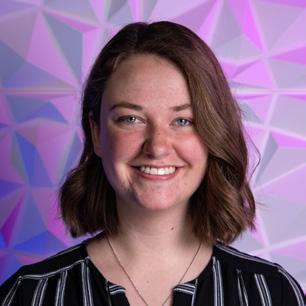
Avery Truman is a senior pursuing environmental studies and geography. When she’s not obsessing over science fiction, she enjoys managing the chaos of the newsroom.
— avery.j.truman@usu.edu
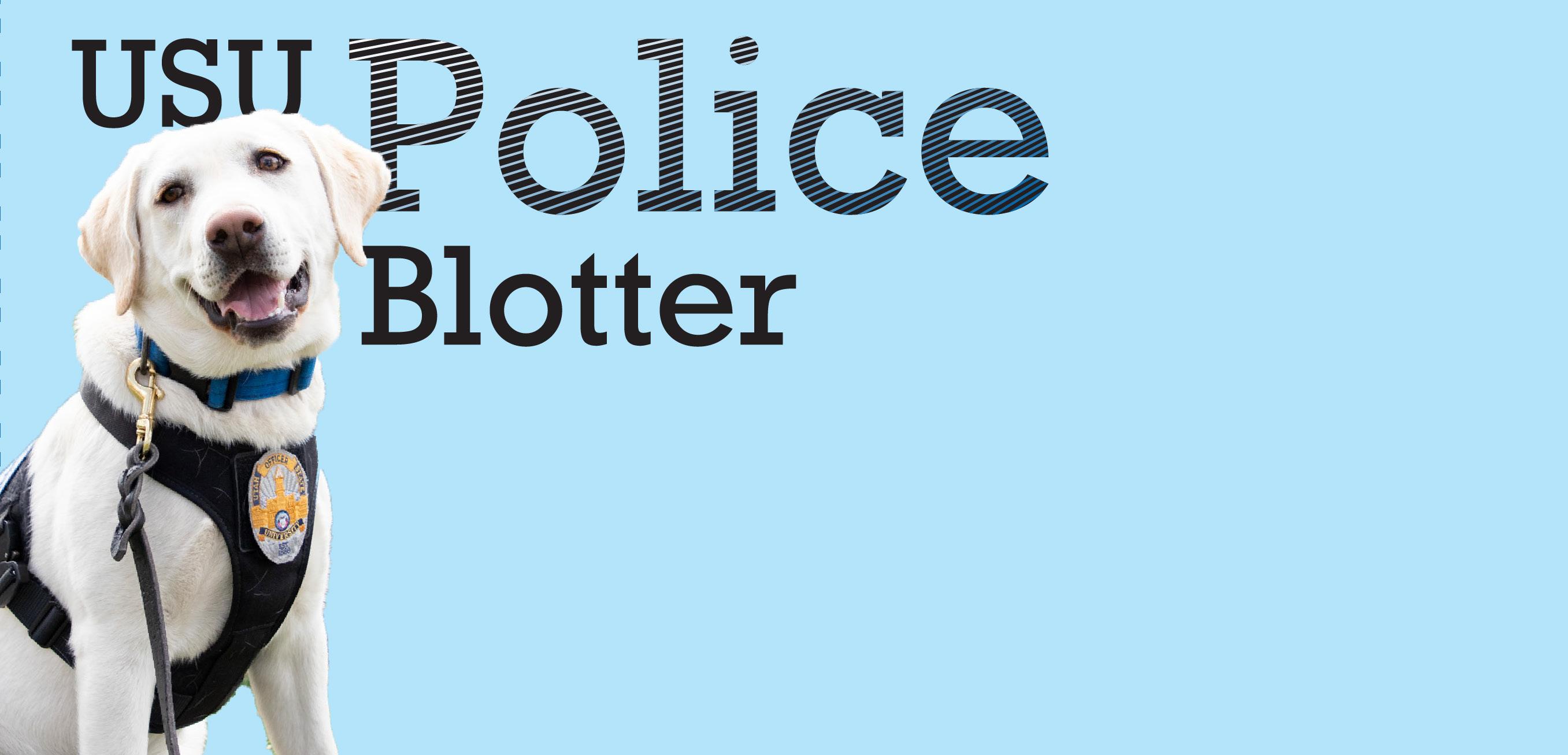
Septmeber 20
An individual was escorted out of the USU Football game after causing a disruption and enticing a fight. Officers made contact with the respondent, who was compliant. An officer advised the individual their actions would not be tolerated at USU events.
Septmeber 23
A bat was found flying in the fieldhouse. The fieldhouse staff are aware of the bat and were advised to not attempt to catch the bat or harm it in any way. No further action was taken at this time.
At 2:44 p.m. on Sept. 30, an Aggie Alert was sent out to students at the Utah State University Logan campus ordering an evacuation of Old Main due to a suspicious package.
University police detonated the suspicious package that was later revealed to be a wildlife research tracking collar.
The all clear was given at 3:45 p.m.
By Bailey Daneils STATESMAN SENIOR REPORTER
In the top of the Utah State University TSC sits the Skyroom, the university’s ritziest restaurant. On Sept. 29, The Utah Statesman news editor Malory Rau and I got the opportunity to dine there before the official reopening.
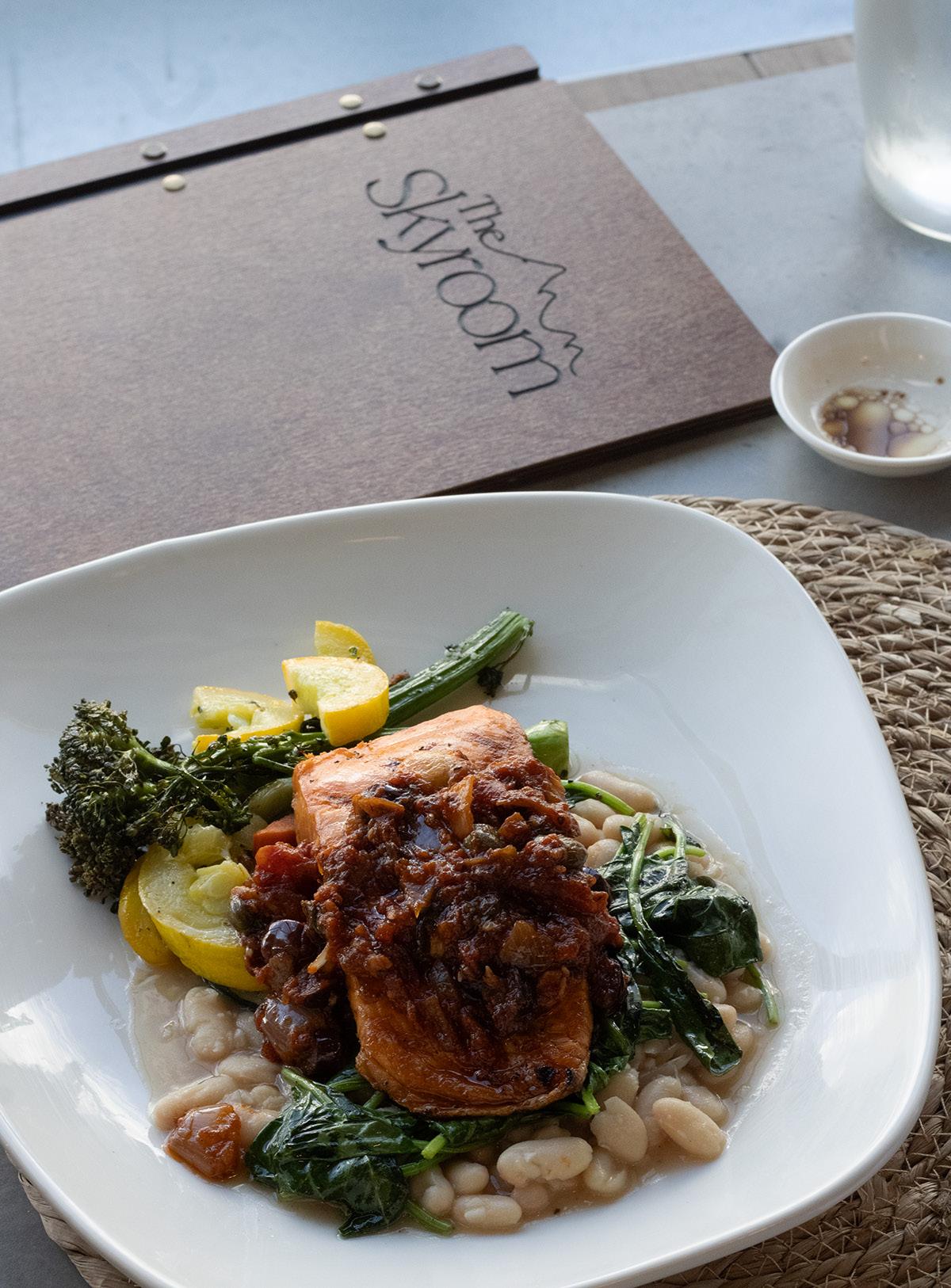
Closed since late 2024 for renovations, the restaurant now has a new look. My only experience there pre-makeover was during Casino Night: Vivas Las Logan watching partygoers get fake married in thrifted wedding dresses.
The atmosphere post-construction on a Monday afternoon was different than that night — and much classier. Sitting at a table next to the large east-facing windows offered a view of the University Inn and the mountains beyond. However, much of our view included the pebble-covered roof of the TSC, which could potentially use some greenery.
Many staff members informed us it was their first day. Despite this, I found the service wonderful. Our waiter was patient when we sent him away multiple times, not ready to order due to fawning over the wooden menus. Options for appetizers included an artisan charcuterie plate and cremini mushroom
risotto, but we opted to go for dessert after our meals instead.
Like at many restaurants, we were given some bread to snack on while waiting for our meals. Slices of white with a crisp brown crust were paired with oil and balsamic vinegar to dip. Typically, I don’t like balsamic vinegar, but I found myself enjoying the combination.
As a pescetarian for almost a decade, I usually check menus before going to a restaurant to ensure there are meals I can have. Although there is no menu currently available online for the Skyroom, I was pleasantly surprised to find different options for alternative diets. A page near the back of the menu claims to offer gluten-free substitutions, but cross contamination may be possible.
Vegetarian options were marked with a small green circle and included dishes like a garden focaccia sandwich and a classic margherita pizza. They also offered some seafood options, and I ended up choosing the seared Atlantic salmon. The description of the salmon explained it included sauteed spinach, cannellini beans and white wine topped with garden relish and seasonal vegetables on the side.
Rau chose the NY strip steak which was topped with garlic-herb butter and served with risotto and seasonal vegetables. She thought it was delicious.
My salmon was cooked just right. I had never eaten “garden relish” before, and found I didn’t completely appreciate the conglomerate of vegetables covering and distracting from my fish, but that might have been because I really like fish. I did finish my whole meal, which is a good sign.
To top off our meals, we each chose a dessert. I went for the brownie sundae featuring vanilla Aggie Ice Cream. Rau chose the cheesecake, which is gluten-free and included strawberries, blackberries and blueberries.
The overall vibe of the restaurant was classy, but it remained obvious that it’s on a college campus, especially with the white and blue theme. In order to get
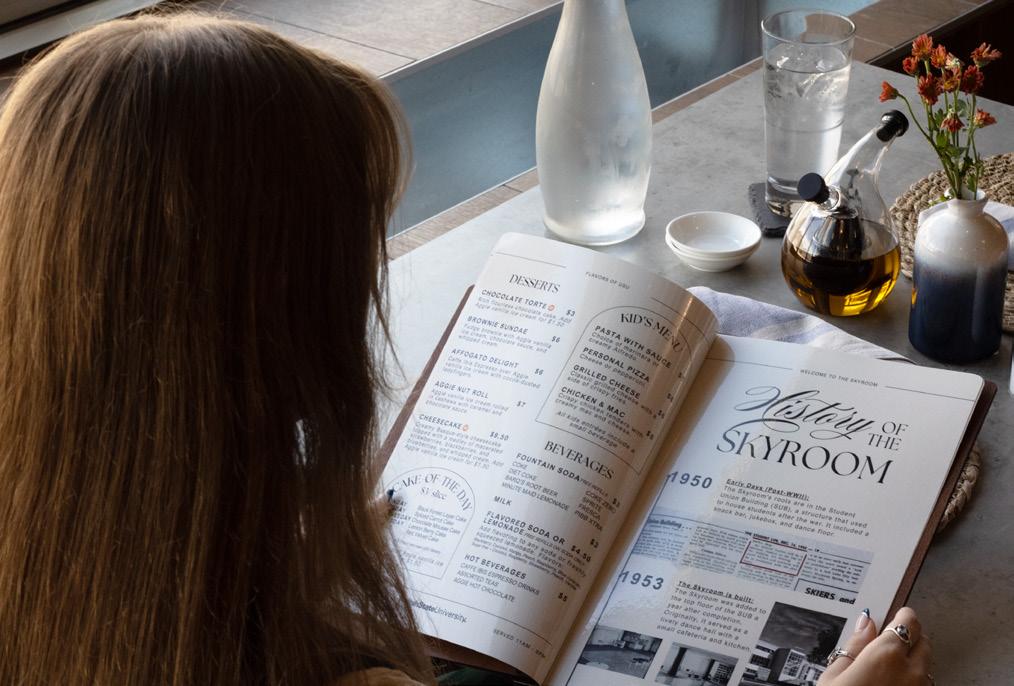
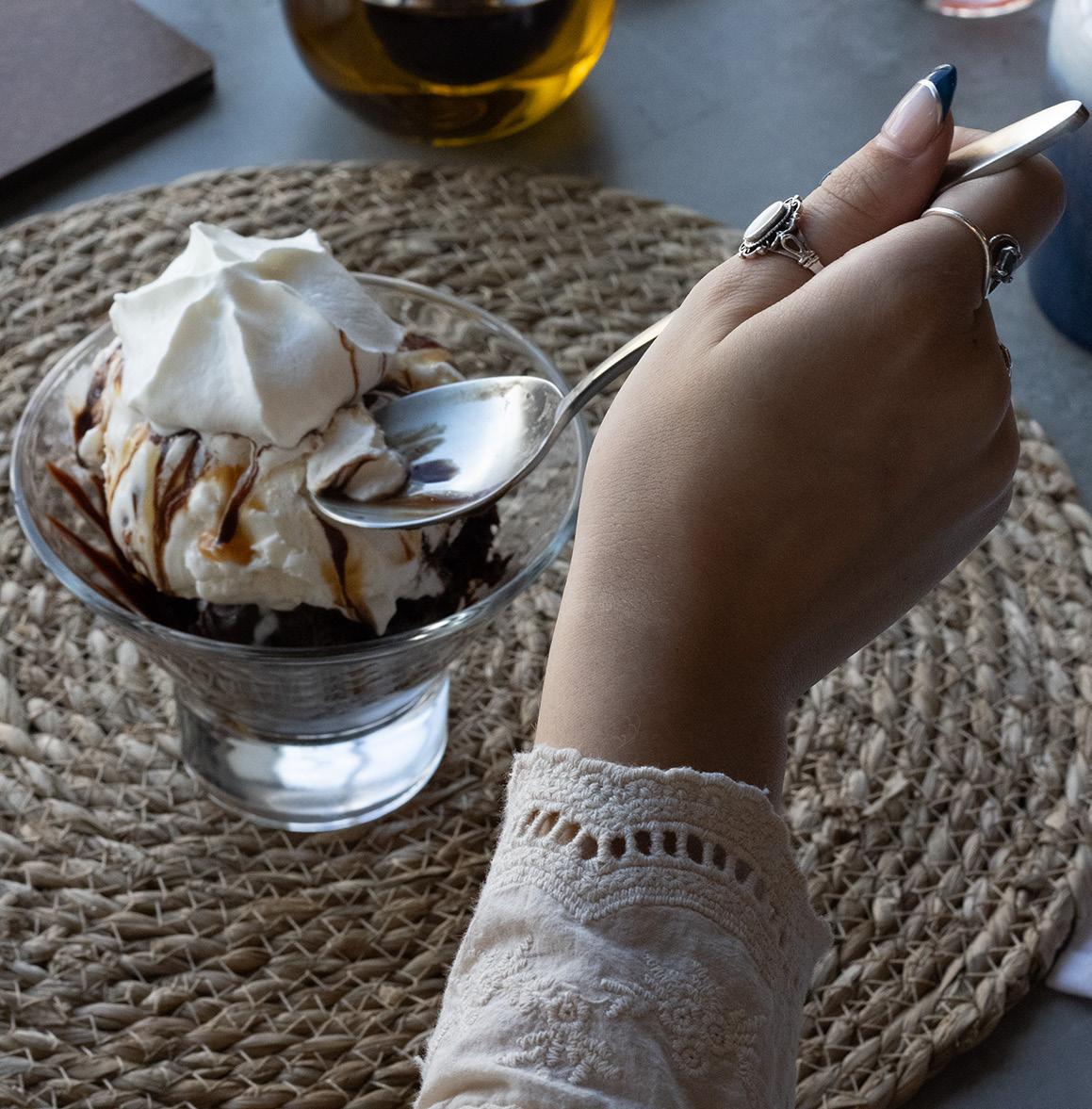
to the Skyroom, you either need to take the TSC’s old elevator or walk through the whole building. I’m not someone who spends much of my time in upscale areas, but I imagine those who do wouldn’t completely appreciate this fact.
I do not imagine this to be a place you’d take your True Aggie kiss but somewhere you’d ask your parents to take you to when they come to visit. None of the entrees were more than $25, but it was a step up from Olive Garden in the elegance factor.
“It was fun, but I, as a student, would never see myself going there or having enough time to go there unless I was with a more seasoned adult for a special reason, or someone who had more money,” Rau wrote in a message to me afterward.
The Skyroom will be reopened to the public soon, serving breakfast in the mornings and lunch and dinner from 11 a.m. to 8 p.m. There’s a buffet style soup and salad bar, and each weekday features a different cake. They also offer Caffe Ibis espresso drinks if you’d like to venture to the top of the TSC for your morning brew.

Bailey Daniels is a senior studying technology systems. She loves Lana Del Rey, sweet treats and all things whimsical.
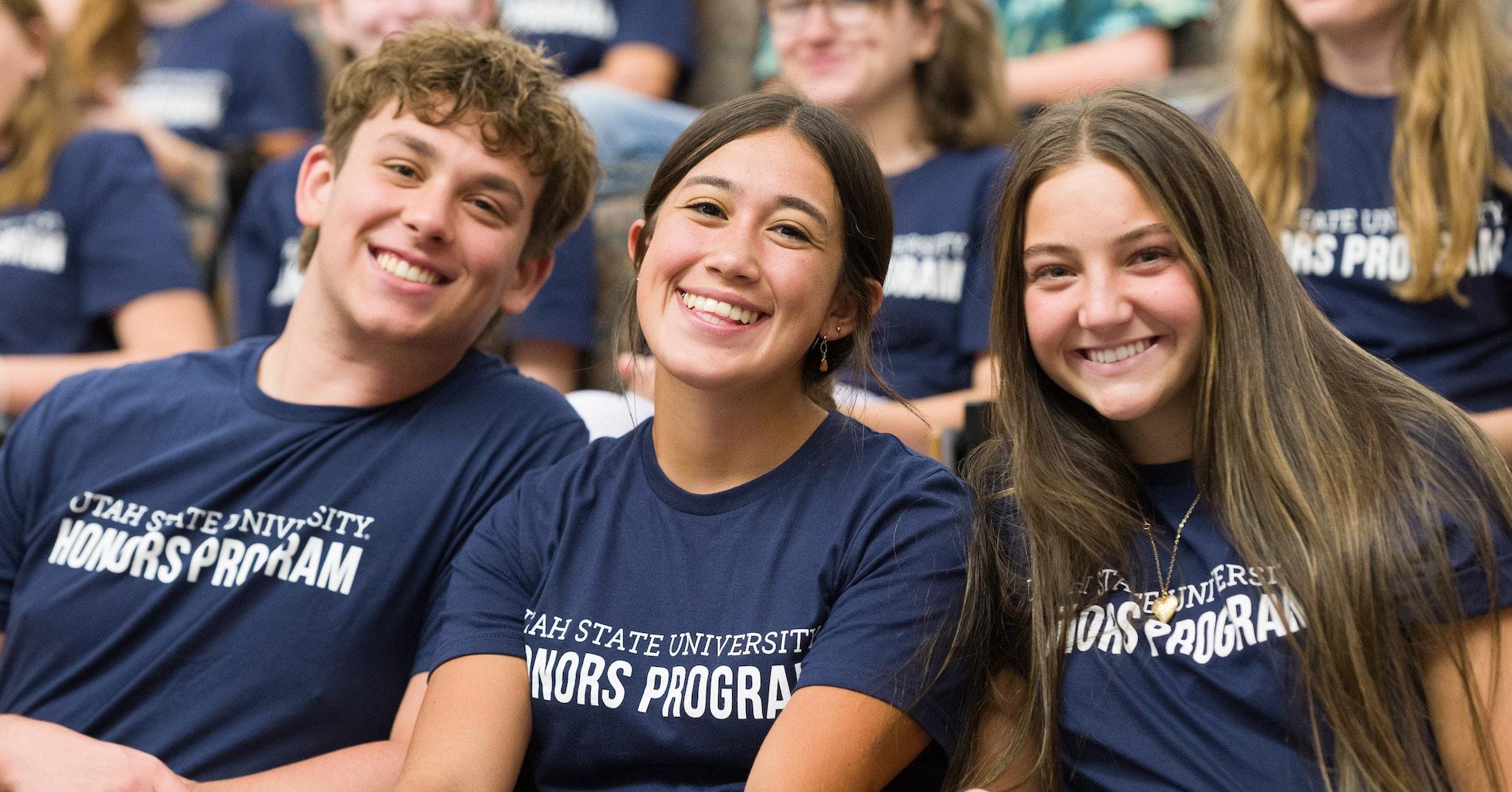
By Dylan Moore STATESMAN REPORTER
Utah State University’s Honors Program is expanding its reach across the state, offering more students the chance to pursue opportunities beyond the classroom while connecting with peers from different campuses.
The program, known for its motto “Dare to Know,” started as a Logan-based initiative but has steadily developed opportunities for students at statewide campuses. With dedicated faculty advisers and a growing student base, the program is aiming to bridge the distance between Logan and other locations while keeping academic rigor and curiosity at its core.
Kristine Miller, executive director of the program and professor of English, said the program is designed to support students and help them grow in ways that extend far beyond traditional coursework.
“The program’s goal is to recognize and develop the potential of motivated students to put learning into practice and make a difference, even when students do not yet see that potential in themselves,” Miller wrote in an email to The Utah Statesman.
That mission is finding new audiences. The program was originally established in 1964 and became university-wide in 2014. Applications officially opened to statewide students in the 2021–22 academic year. Since then, more than two dozen students outside Logan have joined. While Logan currently has 881 students in honors, 25 students statewide are enrolled, according to program records.
Even with smaller numbers, leaders see momentum. Jason Olsen, associate professor of English and the Honors Faculty Advisory Board representative for statewide campuses, said participation has doubled in the past year.
“The number of statewide honors students is growing, doubling in the last year, and I expect that number to grow as we continue to discuss the program with statewide students and show them the great potential it can have in their lives,” Olsen wrote in an email to the Statesman.
Faculty members across campuses are helping build that momentum. In Tooele, Jason Twede, associate professor of criminal justice, has served as a Departmental Honors Advisor since 2022. He said the program is still in its early stages there but even a small start has value.
“For the honors program here, it is fairly new, and so we are just getting things started,” Twede said. “We’re getting the ball rolling.”
For Twede, the most important part of honors is getting students engaged with opportunities outside of the classroom.
“I like to focus on experiential learning, like having an experience like moot court or study abroad or undergraduate research or going to some conference you never would have gone to otherwise just to learn what’s going on,” he said.
Those kinds of experiences are a hallmark of the program across the state. Students are encouraged to participate in Honors Book Labs, which allow small groups to gather with faculty and discuss a book outside of class requirements.
The program also supports undergraduate research, leadership roles and other projects that allow students to connect academics with real world work.
Miller said the honors program is designed to be flexible so students can find value no matter their major or career goals.
“The program is a cross-disciplinary community and idea lab, where students and faculty can meet peers and colleagues outside their own areas of expertise and col-
laborate on almost any idea or project they can imagine,” Miller wrote.
For statewide campuses, a major challenge has been building a sense of connection across distance. The program has taken steps to address this with faculty training sessions, Zoom networking events and outreach at conferences like Weaving Our Stories in Blanding. This year, honors faculty and a student presented at the Blanding event to explain the program’s offerings to prospective students.
Honors students can now graduate with transcript designations on both two-year and four-year degrees. Students earning associate degrees may receive an Associate with Honors designation, while bachelor’s students can complete a University Honors designation. Those who transfer from an associate program into a bachelor’s program may stack both distinctions.
Faculty members say these recognitions help students articulate the value of their education and distinguish themselves after graduation. Alumni often return to mentor current honors students, a pattern Miller hopes continues.
“Many of our alumni volunteer to work with current students in our Honors Alumni Mentoring programs because their honors experience was transformative and meaningful to them,” Miller wrote.
Looking forward, statewide honors advisers hope more students see the program not as extra work but as a pathway to richer experiences.
“If you’re a new honors student, I think the biggest thing I would want them to know is don’t stress out about if you’re too focused on ‘I’ve got all this additional work to do or I need to keep my GPA high,’” Twede said.
With numbers still small outside Logan, program leaders see plenty of room for growth. With more advisers, new statewide events in the works and increased recognition of associate-level students, the program is steadily establishing itself across Utah.
As Miller put it, honors is not just for Logan.
“Honors is a space for innovation and is designed to benefit all students, regardless of whether they are part of the program,” she wrote.

Dylan Moore is a junior majoring in political science and minoring in anticipatory intelligence and Russian. He always loves going on outdoor adventures and cooking. — dylan.moore@usu.edu
By Mia Nielsen STATESMAN REPORTER
Utah State University students compared cow pies on the bottoms of their boots and raced to milk cows at the S.J. and Jessie E. Quinney College of Agriculture & Natural Resources’ first-ever Cowboy Night. QANR Student Council members scooped Aggie Ice Cream and shared milking techniques while students tried their hand at roping and played yard games at The Caine Dairy.
Council member Gavin Turner drove a remote-controlled steer students chased after and roped on a motor-pony.

“The ponies have a gas pedal, and you steer them like a horse with reins. It’s just a fun way to help people learn how to rope and have some fun,” he said.
Turner believes the event was a great way to expose students to agriculture.
“We have fun activities for everybody, especially for the people that don’t always have this kind of stuff at home,” Turner said.
He emphasized QANR Week was not just for students of agriculture.
“Ag is the community. If you come out, everyone is going to be welcoming and have a good time together and make you feel included,” he said.
The QANR college is growing. This is the first year “Ag Week” is QANR Week instead, marking another milestone in the merger of the natural resources and agricultural colleges. The transition means new traditions, new leaders and new committees.
Lanson Allred and Athena Balderas are part of the QANR’s new club representative committee.
“I’m not representing the club itself. I’m like a liaison between the clubs and the college to make sure that they have a voice with our senate,” Allred said.
Allred represents organizations like the USU Collegiate Young Farmers and Ranchers and the Agribusiness Club while Balderas works with the AGNR Biotechnology Club and Nutrition Science Clubs.
Allred explained though QANR represents both natural resources and agriculture majors, most of the current traditions, like Cowboy Night, revolve around agriculture. Natural resources students had the opportunity to advertise their programs at QANR Department Night, but in the future, Allred is excited to see new traditions focusing on the natural resources majors.
“There’s something to be said about learning to work with your hands,” Allred said. “A lot of our majors are outdoors — they’re hard work. It’s nice to see the people that are taking care of our wilderness and our natural resources.”

He believes events like Cowboy Night are important because they expose students to the unseen processes of agriculture.
“It’s important to learn where our food comes from,” Allred said. “A lot of the time, there’s this disconnect about what goes on behind the scenes. A lot of people go to the store, and they buy their milk.”
At Cowboy Night, he said, “it becomes a lot more real. People are actually getting milk from the cows. They understand the process behind how that milk gets treated and eventually ends up in the store.”
Allred hopes people from outside of the college will continue to come to QANR events.
“Even if they’re not an agriculture major, even if they’re not looking into it, I think it’s a huge opportunity for people to see something that is a foundation for society in general,” Allred said.
Balderas said her favorite part of QANR Week was the Agricultural Products Barbecue.
“You’re getting to see local food sources and enjoy new things and get out and support the community,” she said.
At the barbecue, the Student Nutrition Access Center collected excess food.
“None of that food went to waste. We recovered about 176 pounds from that event of extra rolls and salad, which was really exciting,” said Georgia Wilde, SNAC student director. “All of that was reused and given out to students at SNAC.”
SNAC representatives also participated in other QANR Week events. Wilde stood at the entrance to Cowboy Night, collecting the entrance fee, and donated canned goods.

Mia Nielsen is a sophomore studying plant science and journalism. When she’s not writing, she enjoys daydreaming about moving to Spain.




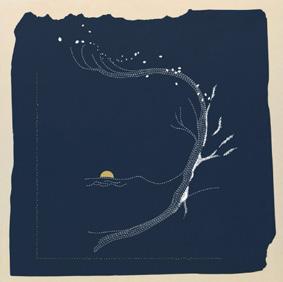



David Howell’s show “Fresh Picked Beats with Dave” is your weekly harvest of new music. The goal is to put you on to music that might have flown under your radar. Tune in Fridays at noon on Aggie Radio 92.3 FM.














By Kenadie Jackson STATESMAN REPORTER
Four volleyball players, two from Poland and two from Sweden, ventured to Utah State University Eastern to further their volleyball careers and explore the states, but they each found something they feel is far better: community.
Ella Persson is a 19-year-old libero/defensive specialist from Sweden. Clara Philipsson is a 20-year-old middle blocker also from Sweden. Emilia Zug from Poland is a 20-year-old outside hitter. Also from Poland is Agata Zwierzyńska, 19, a right-side hitter.
After finding the team, either through agents or a direct contact with a coach, they took the opportunity to challenge themselves and to grow. Last year, they went all the way to nationals and placed No. 7. They each have seen more and more of their personal goals met and their skills developed. While living in the U.S., there have been numerous opportunities for growth on and off the court. They have also navigated unique challenges in adapting to American culture.
There are many cultural differences between Poland, Sweden and the U.S. Major cultural differences include religion and social norms, social interactions and transportation.
“The biggest cultural difference coming to Utah is probably the religion,” Persson said. “Before coming here, I had never prayed in my whole life, and here we pray before every game. ... Sweden is a very secularized country, and therefore that cultural difference is more tangible.”
According to Zug, social interactions between cultures feel very different.
“People are more open to new relationships here, and they are really nice,” Zug said. Persson expanded on these differences.
“The people in the states are a lot more extroverted and will talk to you even if you don’t know them,” Persson said.
According Philipsson, another big difference moving to the U.S. was transportation.

“Everyone is driving everywhere instead of taking the bus, train, a bike or walking,” Philipsson said. With a big move like this one, the team members opened up about feelings of homesickness.
“Something that I also struggled with later in the last season was not being able to talk to my parents on the phone after home games when all of our teammates’ parents were there to support them,” Zug said.
Time zones, busy lives and sleep schedules often come between their communication with their people back home. The players, although being away from home, find ways to stay connected to their Polish or Swedish cultures.
“I talk to my friends and parents every day. … In Sweden, we’re also Christians, so we celebrate Christmas, Halloween and Easter, just like a lot of people here. We don’t have Thanksgiving though, but I really like it. … I really don’t miss anything important,” Persson said. There are many factors of culture that can be shared, like holidays, music, food and language.
“I usually listen to Swedish music. … I also cook food and have been baking different traditional dishes with friends here, so I’m trying … to bring in the things I like in our culture and then teach others about it,” Philipsson said.
Each girl has their own way of keeping home close to their hearts and of sharing that piece of home with their fellow teammates and growing their community. According to the players, this team thrives on community and their support of each other. They have been able to lean on their team for support and love throughout the good and the hard times.
“If it weren’t for my team, I think I would’ve gone home last year, but I’m so grateful I didn’t,” Persson said. Philipsson described her team as a “second family.”
According to the players, the team has learned about Sweden and Poland from these four, and they have returned the education.
“My team helped me a lot. Thanks to them, I was able to see a lot of American things — see many beautiful places in Utah. They also helped me cope with my
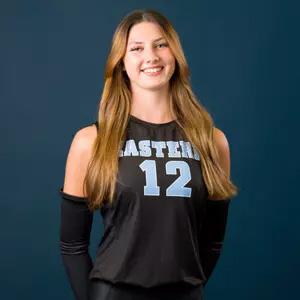

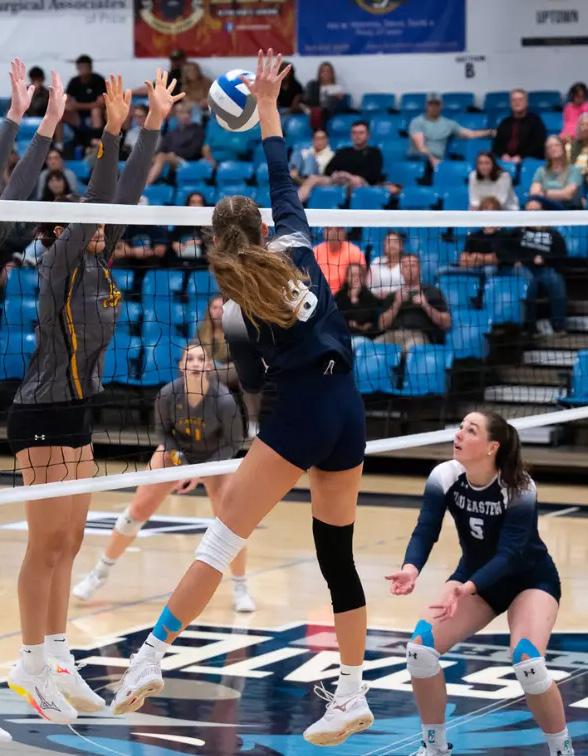
homesickness by talking and spending time together,” Zwierzyńska said.
Each of these players are in their second year at USU Eastern and said their growth individually and as a team shows in every match. According to the players, the cultural differences that once felt overwhelming have become bridges rather than becoming barriers — bridges connecting their team to new perspectives, traditions and languages.
“I just love the girls, and I would do anything for them, and they would do anything for me,” Persson said.
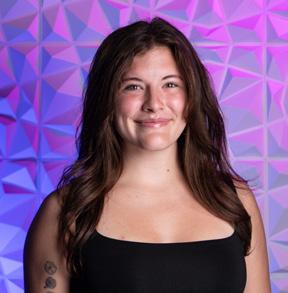
Kenadie Jackson is majoring in journalism and communications and minoring in marketing design. She is from Draper and loves anything active and outdoors. Watch out for her name to be Kenadie Ferraro in November when she marries her best friend.
— kenadie.jackson@usu.edu
By Alici Archibald STATESMAN REPORTER
Utah State University Eastern’s rodeo team is small but mighty, according to Brady Ramone, head coach of the team. His strategy is to keep the team small, focusing on the individual athlete instead of having a big team.
“We’ve got winners,” Ramone said. “I try to focus on that, and it seems to have worked out for us so far.”
Right now, the team has eight athletes: four girls and four boys. Ramone said when he started coaching last year, they only had three athletes.
Despite their small team size, USU Eastern’s team produces athletes that place in the College National Finals Rodeo, or CNFR. National competitors are determined after both fall and spring seasons, and the top three athletes in each event per region qualify to compete.
Saydee Davis is in her third year competing with USU Eastern in barrel racing and breakaway roping. She has been in rodeo for ten years, and she said she got started when she met Ramone.
I can watch them over two, three, four years and watch them mature and help them see it. It’s pretty awesome.
— Brady Ramone
Most of their team is composed of first-year students and sophomores, providing a young team with time to advance. With their already strong talent and up-andcoming athletes, Ramone believes their team is steadily growing.
“We’re kind of a smaller team, but we all love our coach, Brady. He’s awesome,” Davis said.
In her first year in college, Davis placed No. 6 in the nation in barrel racing and was named Rookie of the Year.
“It was so fun, so cool,” Davis said about competing in Casper, Wyoming. “The crowd is huge. The arena is so cool. Casper is just a cool place.”

Davis said her favorite part of rodeo is winning. She loves to finish on top – knowing that all of her hard work was worth it. This year, Ramone expects Davis to make another national appearance, alongside her horse, Rockstar. Right now, Davis sits second in the league.
“If she keeps making runs like she does, she’ll make it,” he said.
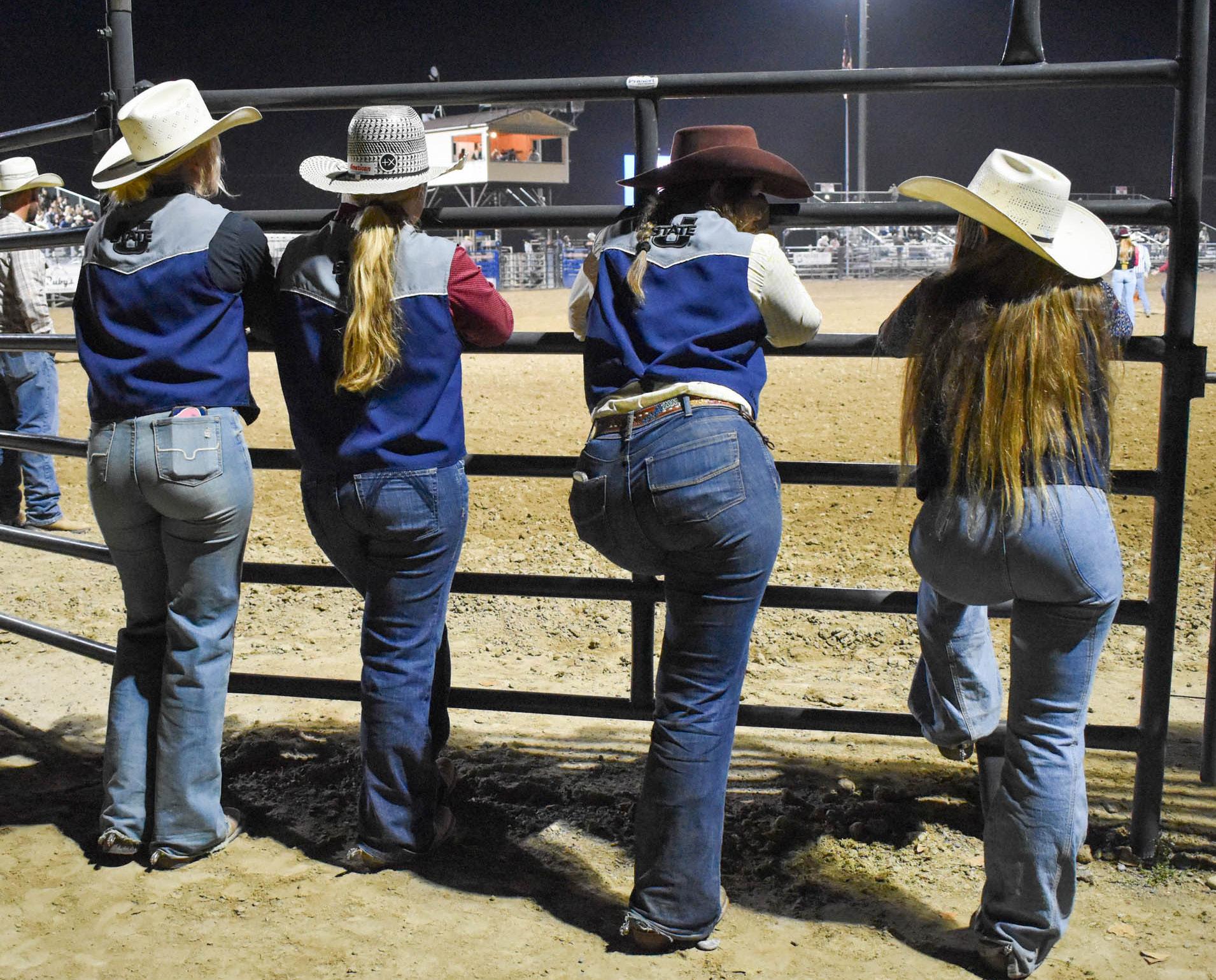
Ramone also said saddle bronc rider Byron Christiansen is expected to make it to the CNFR. Christiansen placed No. 10 last year in saddle bronc riding and sits No. 1 in the Rocky Mountain League.
“I’ve been rodeoing for as long as I can remember,” Christiansen said. “My mom and dad both rodeoed in high school and college, and my dad trains horses for a living, so it’s come from the very beginning.”
Christiansen started competing in third grade and is in his second year competing collegiately. He is currently studying agribusiness and is already working in the field. Alongside his brother, Christiansen runs a custom grazing operation, running 200 head of cattle over 800 acres of farmland.
Christiansen said one of the best parts about USU Eastern is the way he can participate in school, rodeo and work at the same time. It provides a flexible schedule that helps him succeed in all aspects of his life. Ramone said the best part of coaching is watching the athletes grow up.
“I like to bring these kids in and help them mature. Teach them to be adults instead of kids,” he said. “I can watch them over two, three, four years and watch them mature and help them see it. It’s pretty awesome.”

Alici Archibald is a senior studying broadcast journalism. In addition to playing the piano or cheering at sporting events, she can be found on campus with a huge camera.
— a.archibald@usu.edu
By Rory McNeill STATESMAN REPORTER
Country swing dancing has taken over the state of Utah as one of the most popular pastimes around, and at Utah State University, it is no different. One of the most popular clubs on campus is the Country Swing Club, which routinely fills the Cache County Fairgrounds with new and experienced dancers alike.
Despite the fact country swing dancing has been an important part of western country culture for nearly a century, many of the people who frequent the dance floor only started upon arriving at Utah State. In fact, this trend is so common, even a large portion of the presidency of the club is made up of people who began dancing while at USU.
“I went a little bit in high school, but when I got up to Utah State, I took a class, and then from there, I just kept going,” said Ethan Moser, vice president of the
club. “Eventually, I joined the committee and got more involved that way.”
For many, the club was a way to meet new friends and create a new aspect of their social life upon arriving to Utah State.
“I started going on Tuesday nights. One of my roommates found out about it freshman year and was like, ‘Why don’t we go?’” said Molly Thompson, club treasurer. “I had a lot of fun and felt really welcomed, so I kept going back.”
According to the presidency members, the club takes pride in creating a safe and comfortable place for people to socialize and dance, highlighting it as one of the priorities of the club.
“While we do want to grow the popularity of country swing dancing, our focus is holding events for people to socialize and meet others who have similar interests,” Moser said.
Trying to create a friendly and social environment is not necessarily unique to the club, so why has country
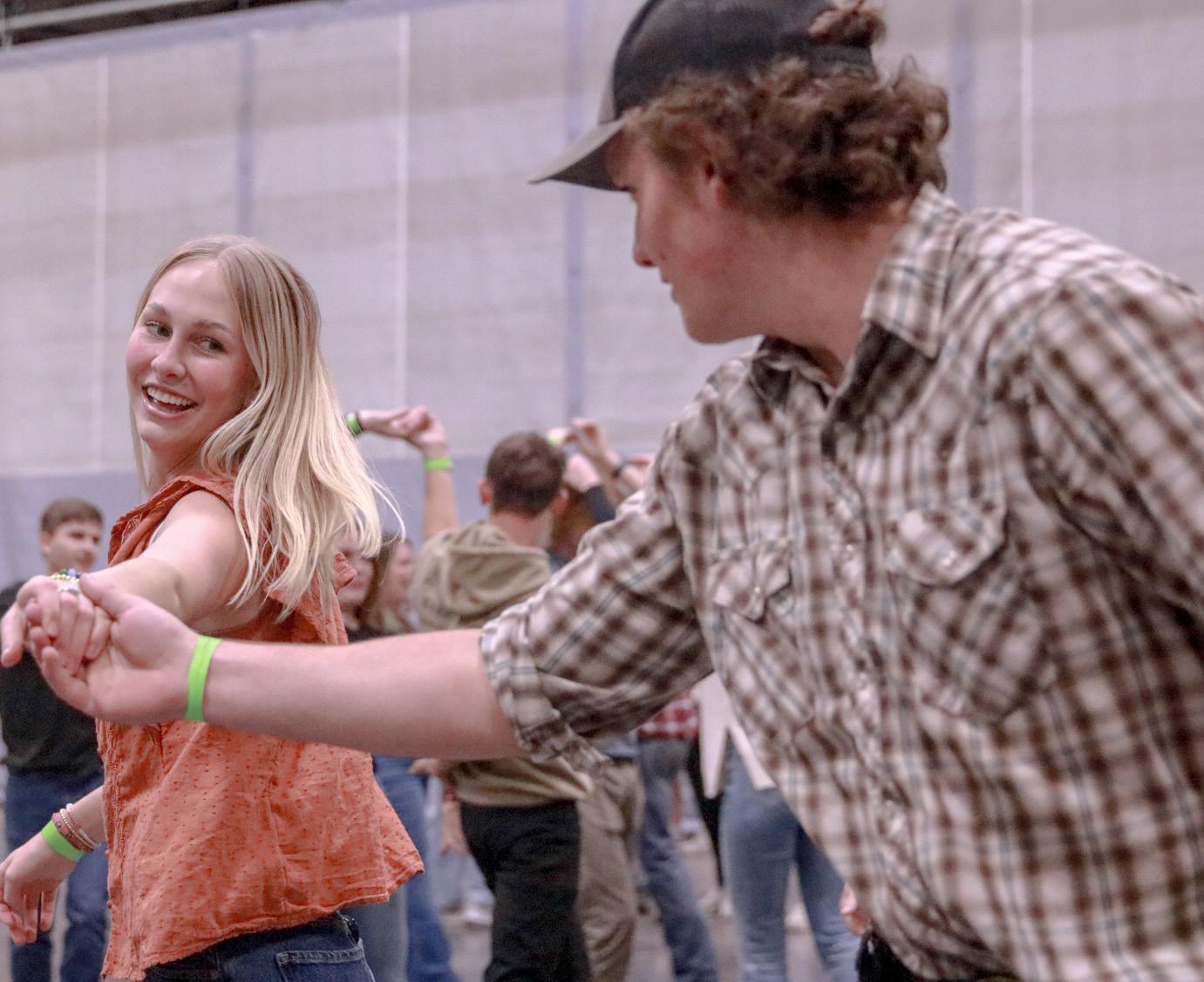
swing dancing become so popular as a past time here at USU?
Both USU and country swing dancing share strong ties to Utah’s agricultural and western history, and Cache Valley is a community based around agriculture. This plays a role in the popularity of country swing dancing, but even future doctors and engineers show up alongside ranchers and veterinarians to dance, so what is drawing such a crowd? Members of the presidency shared their perspective on a possible explanation of the growing popularity of country swing.
“In a smaller town like Logan, honestly, there isn’t a ton of nightlife or things to do,” Moser said. “You can either hang out in your apartment, or you can go swing dancing. It’s an easy, fun thing to do in the afternoons.” Thompson pointed to more overarching cultural aspects of Utah as a possible explanation.
“Utah has a very big ‘meet new people’ culture. I’m not completely sure what you would call it, but everyone is always trying to expand their bubble and meet new people,” Thompson said. “Swing dancing is such an easy way and place to meet new people.”
For some, the idea of going swing dancing sounds completely foreign and rather intimidating. In order to help, the club strives to create an environment where everyone is welcome regardless of past experience. Both the USU club and Logan’s Sage Hall provide opportunities for people to learn everything from the basics to advanced moves.
“When I started going, I felt like everyone there was willing to help,” Thompson said. “The committee members are always there, and we are always happy to teach someone a little about how to dance. Also, when we do our events at Sage Hall, they have instructors who go around teaching people moves.”
The club invites everyone to come out, give it a try and have a good time. It is very active on Instagram @ususacountryswingclub, with posts about events it’s holding and how to get involved.
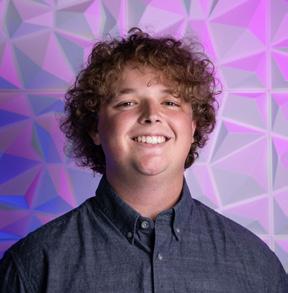
Rory McNeill is a sophomore from Rocklin, California studying mechanical engineering. He loves Aggie sports, skiing, golf and writing music.
By Erica Mejia STATESMAN REPORTER
For many, the Utah State University Disc Golf Club is an opportunity to get great exercise while hav ing fun and meeting people. The club has been around for three years, with an earlier iteration dating back to 2019-20. However, it wasn’t deemed part of the official disc golf association.
With five members on the presidency and 20 team mates total, the club has five teams of four players. Philip Romney, club event coordinator, has been play ing the sport for most of his life and started doing tour naments in 2014.
“When I came to Utah State and found out there was a club, I thought it was a great way to keep up my com petitive disc golf,” Romney said.
The club has recreational teams as well as competi tive, meeting twice a week and practicing for one to two hours with a focus on specific skill. They practice anywhere they can run and catch a disc.
“We’ll go to a local course, a local park,” Romney said. “Sometimes we’ll go to one of our backyards and just practice disc golf.”
Nathan Rencher, historian and service coordinator of the club, has been playing for a couple years. When he found out USU had a disc golf team, he said he wasn’t interested in winning but “playing for opportunities and having fun.”
The club doesn’t only play major universities in Utah — they also play teams from universities in Colorado and Idaho, including Boise State and Colorado Univer sity.
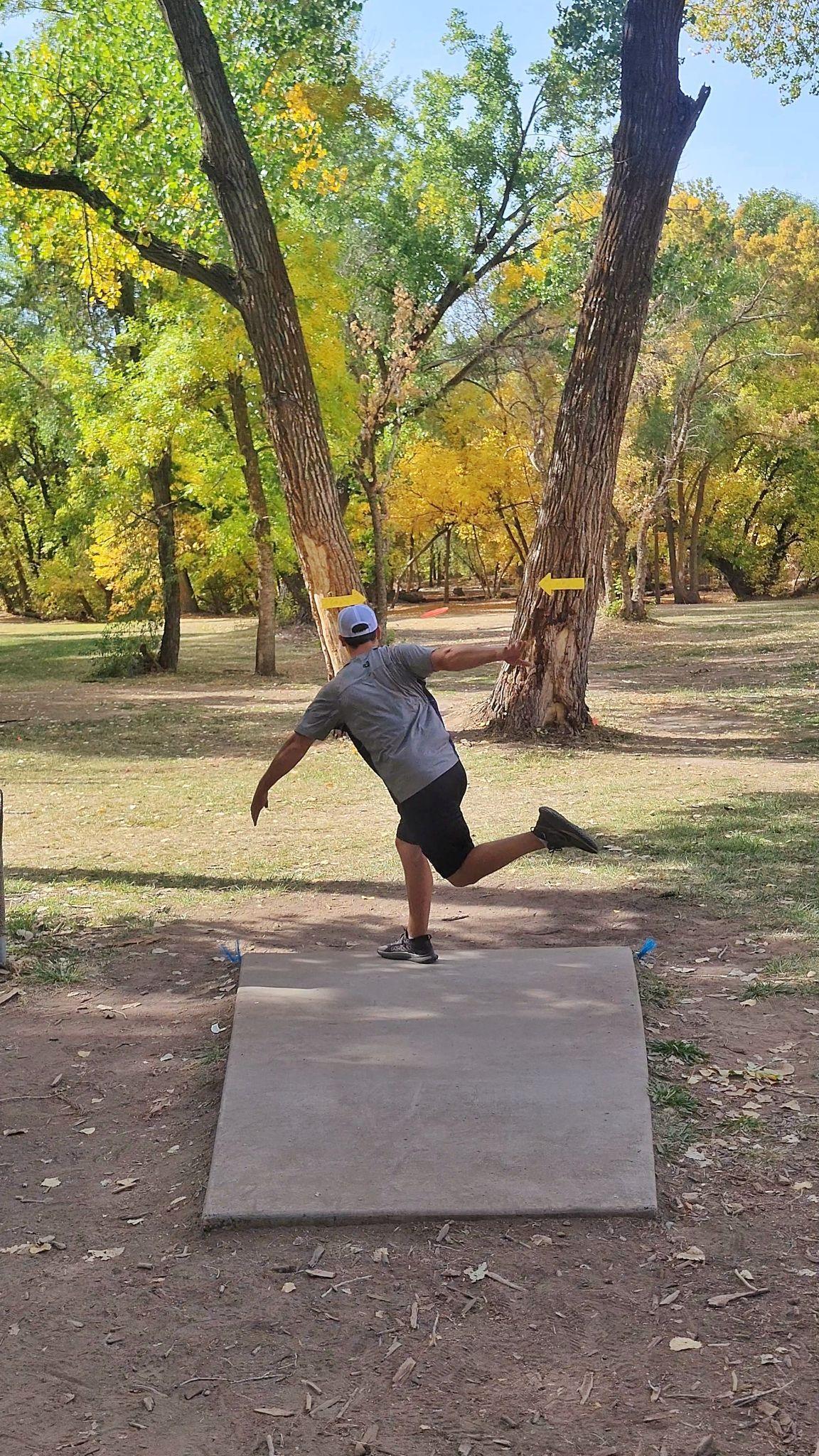
Previously, the club didn’t have a tryout process, but this year, there was one. It was all-inclusive, meaning
to get a ranking and see where you would fall on the competitive side of the club,” Romney said.
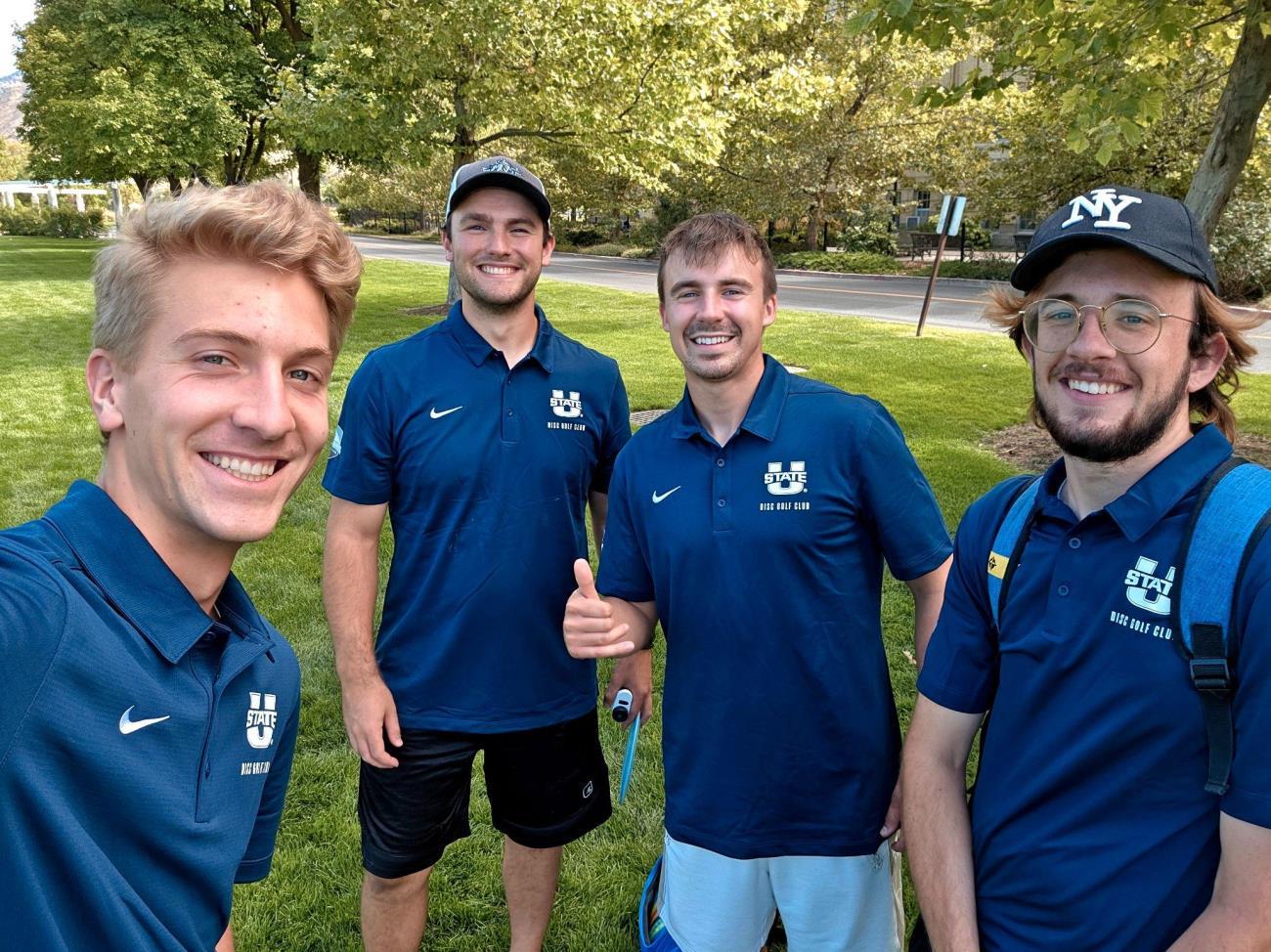

In their home tournament a couple weeks ago, the club had a great turn out.
“We came in second place. We had a lot of people show up, so it was a great event,” Rencher said.
Romney describes disc golf as a year-round sport more enjoyable during the spring and summer seasons, with tournaments happening through the seasons.
“We’re sending our ‘A’ team to — our men’s ‘A’ team and our women’s ‘A’ team — to the regional qualifiers for the national championships next year, which will be in Colorado,” Romney said. “Each university is going to host their own home tournament over the course of the next four or five months.”
According to Romney, disc golf is a great way to get in-
volved in an activity at USU while also getting to know
“Disc Golf Club has people who have played for two weeks and people have played for almost two decades,” Romney said. “So, if you want to play disc golf and come enjoy being outside and throwing discs in the park with a really good group of people, then come join the Disc Golf Club.”
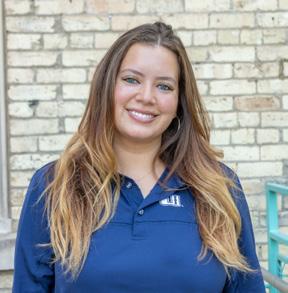
Erica Mejia is a senior in broadcast journalism. She is from California, loves scary movies and coffee and is super excited to have joined the Statesman this year.
— a02310077@usu.edu
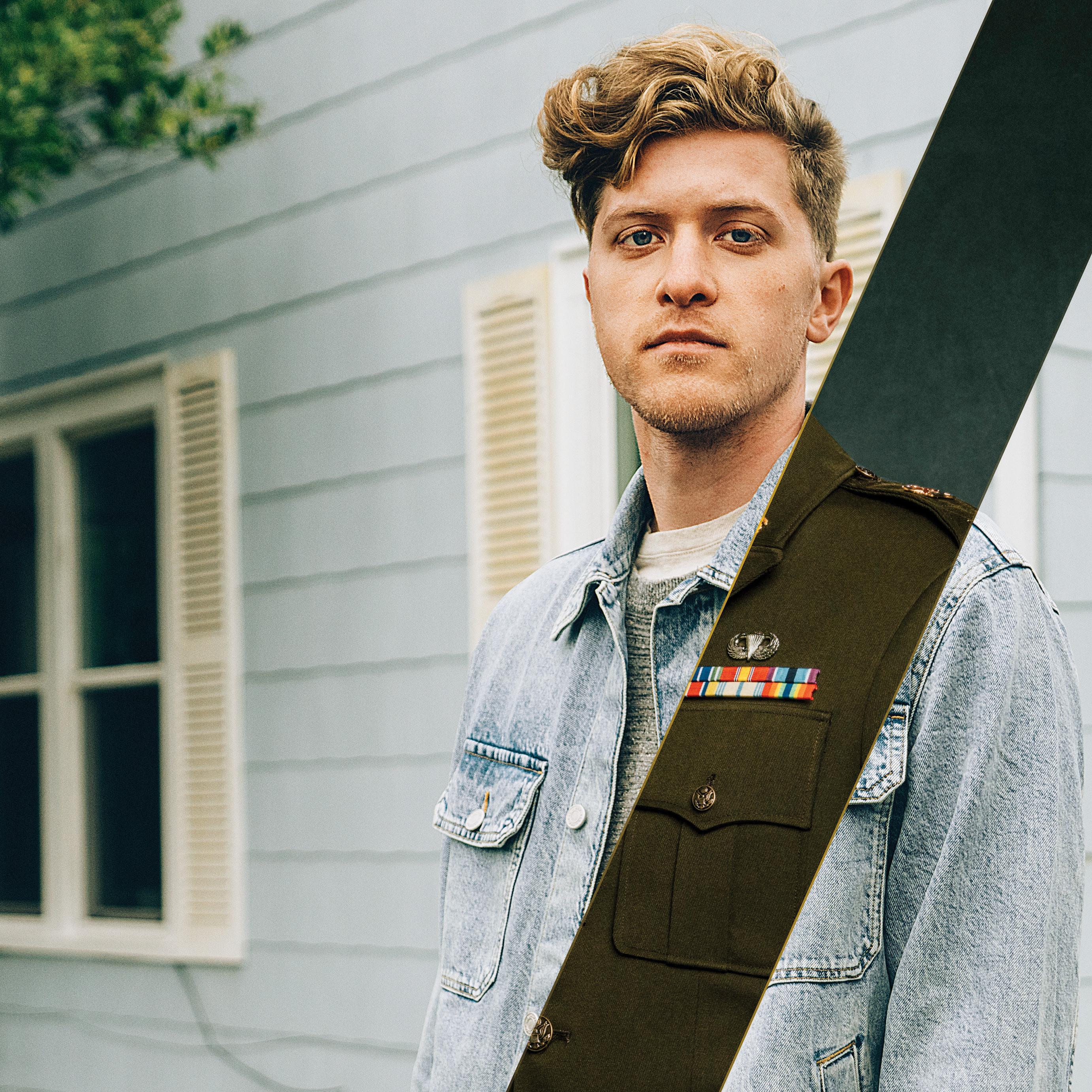
By Malory Rau STATESMAN EDITOR
Parties, classes, concerts, football games, study sessions and drinks — all of these are often better shared with friends, one might say. Friendship often comes and goes throughout our lives and can always be found in the strangest of places. Little did I expect to find a new friend when I picked up one of America’s most challenged books this summer.
In Stephen Chbosky’s “The Perks of Being a Wallflower,” readers can find a new friend in main character Charlie. This is because according to Charlie, as a reader, “you listen and understand.” Charlie starts the book by needing someone to listen and understand, but after reading, you will walk away most likely having needed Charlie in your life as well without even realizing it.
According to the American Library Association, “The Perks of Being a Wallflower” is tied for third in the Top Ten Most Challenged Books of 2024. It is tied with “The Bluest Eye” by Toni Morrison. It is challenged on the grounds of being sexually explicit and containing LGBTQIA+ content, profanity and depictions of sexual assault and drug use. Uniquely, the book is written entirely as letters from Charlie to the reader. Charlie’s letters follow his first year of high school as a wallflower — a shy and introspective individual — while dealing with the usual teen romances, friendships, family life and school, while also battling the recent suicide of his best friend and some repressed trauma later discovered throughout the book.
As a long-time lover of the film adaptation of this novel, I was excited but also hesitant to pick up the book. My hesitancy was due to handling such heavy topics over a longer period of time that it takes to read, rather than just for a 1 hour 45-minute film.
To my pleasant surprise, Charlie is a friend who has readers laughing through their tears. Chbosky’s storytelling through Charlie has readers fall in love with his introspective, sensitive and kind-hearted nature.
His sweetness shows through on page 106 when he says, “I don’t know, I just had a great day and I hope you did too,” whereas his loyalty and compassion shine on page 161 when he is consoling his friend Patrick through a difficult time.
“It’s just hard to see a friend hurt this much, especially when you can’t do anything except ‘be there,’” he says.
These small moments of vulnerability are what reach the readers through the page and elicit a sense of empathy that has readers rooting for Charlie. Despite some of Charlie’s unique challenges, he is extremely understanding due to his openness and vulnerability. It is hard not to relate to Charlie because at one point or another, we all understand what it is like to just need a friend sometimes.
Not to mention, the cast of characters Charlie finds himself in cahoots with keep readers far from any feelings of loneliness. They will fall in love with the character Sam, just as Charlie does, and come to admire her stepbrother Patrick’s tenacity and enjoy his rebellious nature.
Despite the many challenges “The Perks of Being a Wallflower” has faced, I in turn, challenge readers to give its pages a turn this Banned Books Week. Charlie’s letters will make you laugh, cry and everything in between. If you give the boy a chance, he may just be the friend you’re looking for right now.
— m.rau@usu.edu





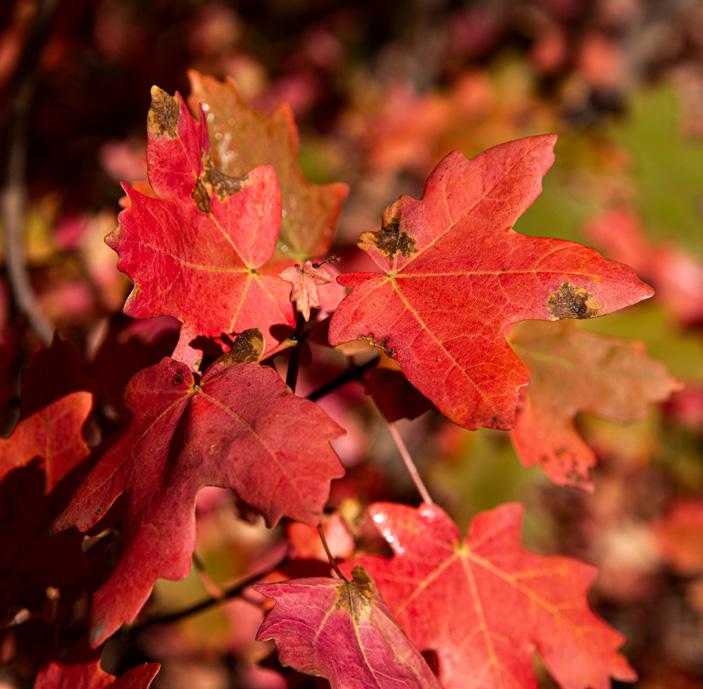




Jack is a senior that shouldn’t be graduating but somehow snagged enough experience to be a professional graphic designer, so he is going to try. Compliment him if you see him around — he is trying his best, and it is really funny to see how he handles praise.


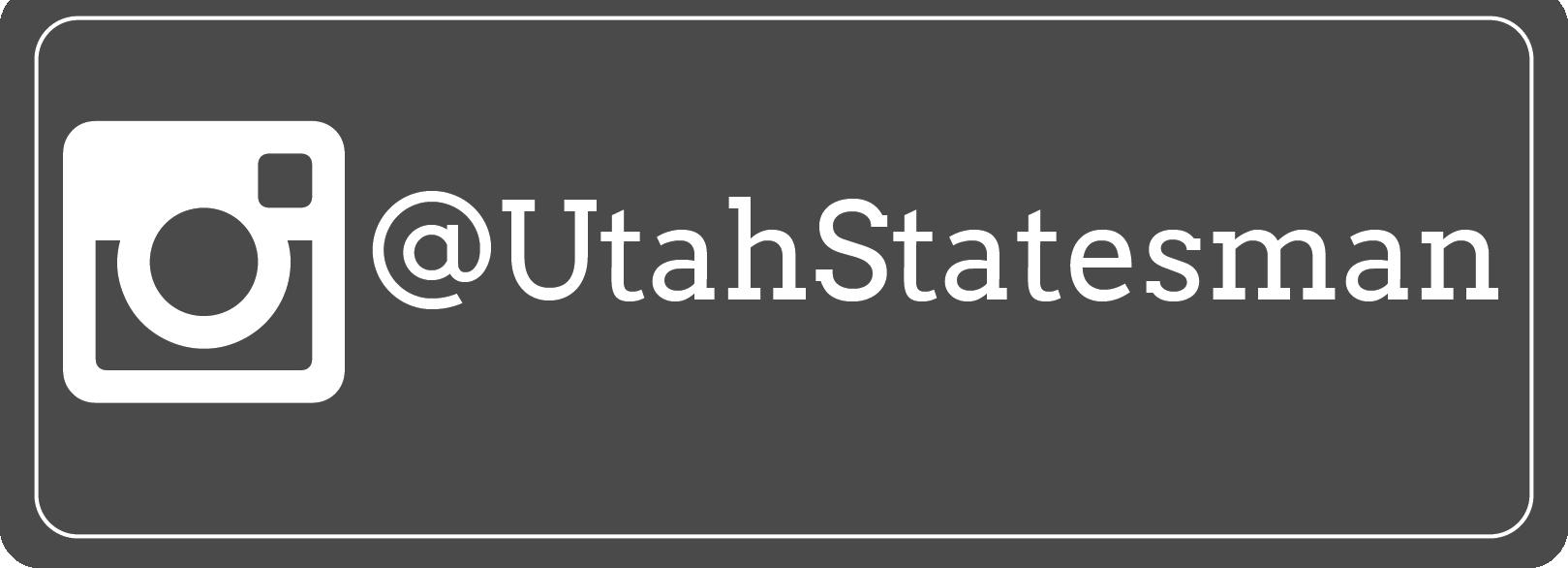

www.sudokuoftheday.com.



Monday, October 20th 2025

12-2 PM in the TSC Hub

